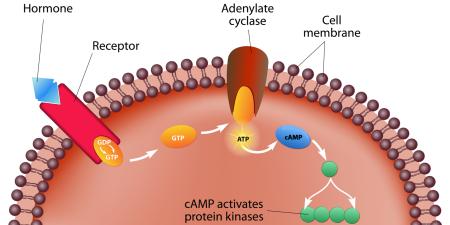Case
While delivering Mrs. Burdett’s third child, her obstetrician observed that the baby had ambiguous external genitalia; on the evidence of the labioscrotal folds and incompletely formed penis or clitoris, the baby’s sex could not be determined on sight. The obstetrician calmly answered the Burdetts’ question about whether their new baby was a boy or a girl by saying that some further examination would be needed. Then he called in Dr. Leclerc, a pediatric endocrinologist, to explain the situation to the Burdetts and help them decide on their next steps.
Genetic tests performed the next day revealed that the baby had a 46,XY karyotype. Based on this and on the ratios of testosterone to luteinizing hormone and to dihydrotestosterone, the Burdett newborn was diagnosed with partial androgen insensitivity syndrome (PAIS). When the Burdetts learned of the diagnosis, they were sad and nearly speechless. Neither had ever heard of such an occurrence before. Dr. Leclerc told them that the condition was not extremely rare and that parents of babies born with PAIS had taken a variety of approaches; some parents designated a sex for the newborn immediately and had surgery performed on the external genitalia if necessary. Other parents chose to wait until the child grew some and developed characteristics that appeared to favor one gender identity over another. But Mr. Burdett protested, “I don’t understand. If our child has XY genes why doesn’t that make him a boy?” Dr. Leclerc had been asked these questions before and knew that an overly medicalized answer would not be satisfying. He told the Burdetts that the decision about how to treat a child with PAIS was complicated by many factors beyond DNA and hormones. Understanding that Mr. and Mrs. Burdett were devastated by the confusion over their newborn’s sex, Dr. Leclerc wanted to give them all the information and options he could without making the process even more difficult. He knew, though, that most parents in the Burdetts’ position ended up asking him what he would do if the child were his.
Commentary 1
Dr. Leclerc is in a unique position. He has the potential to mitigate the Burdetts’ anxieties about their child's present and future growth and development while designing both a short-term and a long-range outline that can initially guide the parents and later the child. Within this framework he can begin to establish a trusting, open, and, presumably, mutually satisfying relationship. The care plan should be organized and written in a schematic format with new information and details added as they become available—the child’s case is too complex to rely solely on parental memory. This written outline will then become a readily accessible reference for the Burdetts and everyone involved in Baby Burdett’s care. Schematics, such as charts, maintain a visual focus for clinical discussions over time. The framework should establish:
1. The overall clinical picture.
2. The clinical approach.
3. A plan for following the baby and the parents over time.
Using these techniques Dr. Leclerc can gradually incorporate all clinical data, pertinent information, and answers to the Burdetts’ questions into the clinical record as they arise, while the corresponding schematic will allow the parents to have ongoing access to their child's assessment and test results. This reference will also be helpful for all other physicians who see the baby. Dr. Leclerc can immediately explain their baby's clinical picture to the Burdetts and can share information on the baby’s overall growth and development as it occurs. But he must stress that he cannot predict their child's gender identity with accuracy.
Establishing the Overall Clinical Picture
The clinical picture of any given child begins with conception. Most of the genome is active in embryonic and fetal neuronal development. Precise gene functions or actions in brain development are mostly unknown, and it is important to emphasize to the parents that none of us ever really knows quite who or what our child is or will be at the time of its birth or how he or she will develop after birth, much less during gestation. Part of the joy and excitement, as well as the anxiety, about child rearing is this unpredictability, and any added unpredictability in a child with an intersex condition does not diminish the child. On the contrary, such a human variation may enrich the child's life experience (although discussions of such a plausible development may not readily relieve typical parental anxieties at this time).
Physiologically speaking, the karyotype of the child is important, but causality of gender identity is separate from karyotype and has not been delineated. The Burdetts should be informed that the exact function of the genes on the Y chromosome and their actions in mediating the sexual differentiation of the brain are unknown. What is known and what the parents must know is that the presence of the Y chromosome by itself does not lead to a male gender identity.
In fact, few general relationships between sex-specific phenomena and their influences on gender identity have been discerned for typical children, let alone for children with intersex conditions. For example, the importance of the timing of prenatal hormonal effects on human brain development, or even dose-response relationships, is only poorly understood. Gender identity is a reductionistic construct that presupposes some knowledge of what identity, itself, means beyond the purely subjective and intuitive. Any concept of gender causality must preserve, explicate, and satisfy our human intuitions about what gender is.
During post-gonadal fetal development, this baby was exposed to substantial levels of androgen, but, because of the baby's partial androgen receptor defect, much of this androgen exposure was ineffective for establishing definitive male sexual differentiation. Some active androgen exposure was experienced and achieved real, but presently unknown, interactions with (other) direct or indirect Y-chromosome-induced functions.
After noting the clinical data presently available in the written outline, Dr. Leclerc should convey what further data might be helpful and explain that the quantity, quality, and the timing of prenatal androgen exposure probably has a different relationship to brain development than it does to genital development—that is, the brain and genitalia do not necessarily have either synchronous or corresponding development. Then Dr. Leclerc should interpret the clinical situation for the parents in lay terms: sex-assignment is important for this child, but the assigned sex may be discordant from the child's ultimate recognition of its gender.
Dr. Leclerc can discuss their baby's diagnosis and the lack of urgency in this case (because of the absence of metabolic abnormalities). He can explore the parents' support systems including extended family, friends, and social contacts. He should also provide outside resources for the family. This can include a child psychiatrist, a pediatric urologist, and a nurse with specialized interests in developmental genital anomalies. Dr. Leclerc can provide the names of willing individuals with similar conditions or parents in similar situations; he can direct them to web-based information for androgen insensitivity-specific or more generalized intersex support groups. Finally, Dr. Leclerc can reaffirm that, despite the apparent ambiguity, their baby will know who he or she is.
Establishing the Clinical Approach
A team approach to managing Baby Burdett is indicated because of the complexity and multispecialty needs of this child. The Burdetts should be encouraged to interview each of the assigned specialists. Dr. Leclerc or one of the other specialists should be designated the chief spokesperson for the team. The specialized nurse would be an ideal contact and coordinating person for the parents. Other specialized personnel may not be based in the hospital, so communication or consultation with them would frequently be by telephone or e-mail. The nurse-specialist is in a good position to coordinate rapid communication among these consultants and the Burdetts.
Establishing the Plan for Following the Baby Over Time
Short- and long-term plans should be established for following the baby and the parents. The outline and schematic chart will be updated whenever new information is available or decisions are made. The parents can record their own observations during their baby's growth and development in this chart. This follow-up plan provides a flexible approach for coordinated reassessments of the child at specific intervals. By providing routine input from the parents, the child, and from each of the subspecialists, the plan also encourages flexible clinical and parental strategizing as the baby's overall identity unfolds.
Unforgiving interventions should be discouraged until longer-range clinical goals are clear. One must be prudent in recommending surgical reconstructions—for that which is removed cannot be replaced. Dr. Leclerc should emphasize that non-excisional reconstructions can always be undone at a later date if the child so desires, but tissues that are excised are lost. Vaginal or phallic reconstructions, for example, generally remove nothing, while genital or gonadal excision is permanent. The timing of surgery is less important than whether the surgery chosen is in the child's future best interest.
Reproductive potential is a risky parameter for assigning sex. Virtually all people are sexual, but not all are reproductive. Some cannot reproduce, some choose not to, and some prefer that their mates carry out reproductive chores without their participation. A child's future (adult) desire for or rejection of reproduction is unpredictable and, hence, a poor guide for early sex-assignment decision making.
Conclusion
The central theme of this approach to a baby with an intersex condition, then, is that only a given person can know who he or she is. As with each of our children, we parents must learn to adapt to our children as we (and they) begin to recognize who they are, and we must assist them in those developmental tasks and needs peculiar to each of them. Flexibility in our approach is critical because the ambiguity of the situation is ours, not the child's. The anxiety about the ambiguity is also ours. The child's privacy is important, but secrecy may be counterproductive. Indeed, as in many vital situations, openness with the child can aid in developing important bonds of mutual trust and communication between parents and child, parents and physician, and physician and child. Clinical data are unlikely to remain a secret forever.
Ultimately, the parents must make the decision about initial assignment of sex, for social and legal reasons, generally within a few days of birth of the baby to about 1 to 2 weeks of age. It is important that the child's physicians aid in this decision-making process. It is also important that the child's physicians respond sensitively and remain available to the parents and to the child, over the time of the child's growth and development.



